In Cold Blood by Truman Capote
description: a non-fiction novel that details the 1959 murders of the Clutter family in Kansas and the investigation that led to the capture of the killers
27 results

Keep It Real: Everything You Need to Know About Researching and Writing Creative Nonfiction
by
Lee Gutkind
Published 1 Jan 2008
They cultivated the subjective voice, believing that the writer’s point of view had become an integral part of any story. Novelists also turned their hand to writing nonfiction and incorporated the narrative techniques that had served them so well in fiction. In 1966 Truman Capote examined the murder of a family in Kansas in his seminal work In Cold Blood. A few years later Norman Mailer’s nonfiction meditation on an antiwar rally at the Pentagon became The Armies of the Night, a work that won a Pulitzer Prize. Its subtitle, History as a Novel, the Novel as History, spoke to the crossing of two great currents as journalism met creative writing.
…
Less vital background information, in contrast, might wait for an afterword. Some writers want to plunge the reader headlong into the story without pause for niceties; here too the afterword appeals. Writers can communicate their choices to readers in smaller ways, should their works not lend themselves to a fore- or afterword. Truman Capote added a subtitle to In Cold Blood: A True Account of a Multiple Murder and Its Consequences. These ten words set the terms for the book’s reading and evaluation. Agents, editors, and publishers can help writers form honorable contracts by truthful pitching, labeling, and marketing of works and by vigilant pursuit at the least hint of fabrication.
…
When creative nonfiction writers gunkhole, they too lower their nets, to learn more about what’s beneath a subject’s surface. At first a given topic may appear to have little to offer. But a good writer, through literary skill, impeccable research, and some mysterious, personal intuition, knows when to sound the depths. One of the best-known examples of finding the story behind a story is Truman Capote’s In Cold Blood. Capote’s curiosity was first piqued while reading a New York Times story about a brutal small-town Kansas murder. As he read reports about the killers and the murders’ horrible details, Capote had a sixth sense that there was more to the story. A deep emotional spark combined with his well-developed storytelling instincts, and Capote set off for Kansas.

You Can't Make This Stuff Up: The Complete Guide to Writing Creative Nonfiction--From Memoir to Literary Journalism and Everything in Between
by
Lee Gutkind
Published 13 Aug 2012
Sethi and Briggle demonstrate that the “creative” in creative nonfiction often means being proactive and imaginative in how you seek, gather, and utilize information. You don’t need to make stuff up. Inner Point of View It’s a leap, for sure—a new orientation. But just because you’re writing nonfiction doesn’t mean that you can’t get into your characters’ heads and show your readers the world through their eyes. Truman Capote did this masterfully in In Cold Blood (1965). Remember the book, or the movie? It’s about the savage shotgun murders of four members of the Clutter family in the small town of Holcomb, Kansas. There was no motive for the crime and few clues, but eventually two young drifters, Dick (Richard Eugene Hickock) and Perry (Perry Edward Smith), were captured and confessed to the crimes.
…
You will even find creative nonfiction stories featured on the front page of the New York Times and the Wall Street Journal. We will look at some examples of that later in this book. If you leaf through magazines published in the 1960s and 1970s (you may have to use microfiche), you’ll see that creative nonfiction was dominant then as well. Gay Talese, Truman Capote, Lillian Ross, and Norman Mailer regularly contributed what we now call creative nonfiction to the magazines noted above as well as to magazines that no longer exist, like Collier’s and the Saturday Review. The big difference between then and now is that this artful nonfiction is rapidly growing, while readership and sales of literary and popular (paperback) fiction have remained stagnant or decreased—and that the genre now has a name most everyone accepts.
…
CROSSING GENRES Some people refer to creative nonfiction as the fourth genre—behind drama, poetry, and fiction. But creative nonfiction is also a second genre for some prestigious writers. Ernest Hemingway, the Nobel laureate best known for fiction, wrote stirring creative nonfiction like Death in the Afternoon , his paean to bullfighting. George Orwell, James Baldwin, John Updike, Phillip Roth, Truman Capote, and David Mamet have distinguished themselves equally in fiction or drama, and in creative nonfiction. Mary Karr, Diane Ackerman, and Terry Tempest Williams were poets first before discovering the potential of creative nonfiction, which has brought them fame and fortune. Creative nonfiction is not only the second genre for some authors but it’s also the second profession for many distinguished men and women.

The Card Catalog: Books, Cards, and Literary Treasures
by
Library Of Congress
and
Carla Hayden
Published 3 Apr 2017
Philadelphia & New York, J. B. Lippincott Co., 1960. Ezra Jack Keats, The Snowy Day. New York, Viking Press, 1962. Maurice Sendak, Where the Wild Things Are. New York, Harper & Row, 1963. James Baldwin, The Fire Next Time. New York, Dial Press, 1963. Truman Capote, In Cold Blood. New York, Random House, 1965. Truman Capote holding first edition, Bruce Davidson photographer, 1966. Dee Brown, Bury My Heart at Wounded Knee. New York, Holt, Rinehart & Winston, 1970. Acknowledgments Many of the talented people working at the Library of Congress helped me in the completion of this book.
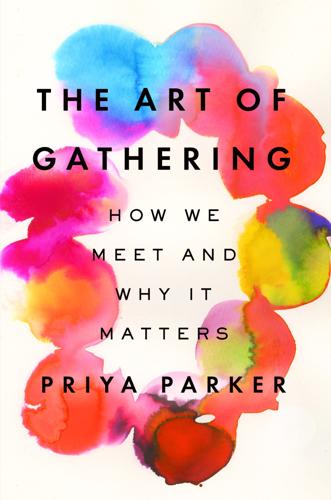
The Art of Gathering: How We Meet and Why It Matters
by
Priya Parker
Published 14 May 2018
See Kathleen Hennessey, “Obama Takes Questions Only from Women, Apparently a White House First,” Los Angeles Times, December 19, 2014, http://beta.latimes.com/nation/politics/politicsnow/la-pn-obama-reporters-women-20141219-story.html. “There was something radically democratic” Deborah Davis, Party of the Century: The Fabulous Story of Truman Capote and His Black and White Ball (New York: Wiley, 2006). He even had thirty-nine-cent masks Guy Trebay, “50 Years Ago, Truman Capote Hosted the Best Party Ever,” The New York Times, November 21, 2016, https://www.nytimes.com/2016/11/21/fashion/black-and-white-ball-anniversary-truman-capote.html. Chapter 4: Create a Temporary Alternative World From SheKnows.com Kat Trofimova, “Ways to Spice Up Your Next Dinner Party,” SheKnows.com, December 2, 2013, http://www.sheknows.com/food-and-recipes/articles/1064647/ways-to-spice-up-a-dinner-party.
…
If they could make the different tribes of anti-poverty warriors stand on level ground and hear one another democratically, perhaps they could begin to change how the field works in general. This democratization of gatherings isn’t just for presidential occasions and poverty conferences. Many parties and other social events could benefit from some assertive equalizing. It was in part because the writer Truman Capote understood this that he was able to make his Black and White Ball such a great splash. On November 28, 1966, the Monday after Thanksgiving, Capote invited 540 of his “closest friends” to the Plaza Hotel in New York for a masked ball. It was unlike any party the city’s society had ever seen.
…
Capote invited princesses and politicians, Hollywood stars and writers. The party was held in honor of Katharine Graham, which was itself an unusual move as she was a recent widow. Although she would go on to run The Washington Post during two of its most consequential decades, she was relatively unknown at that moment. Capote, whose bestselling book In Cold Blood had recently been published, invited the maharani of Jaipur and the Italian princess Luciana Pignatelli, as well as the middle-class family from Garden City, Kansas, who had hosted him while he was doing research for the book. And in addition to mixing all these worlds, he asked everyone to wear masks.
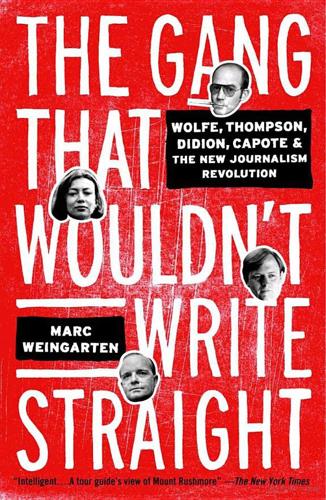
The Gang That Wouldn't Write Straight: Wolfe, Thompson, Didion, Capote, and the New Journalism Revolution
by
Marc Weingarten
Published 12 Dec 2006
“It was as strange to me”: Jane Howard, “How the ‘Smart Rascal’ Brought It Off,”Life, January 7, 1966. “People who don’t understand the literary process”: Ibid. “It wasn’t a question of my liking”: Ibid. Using John Hersey’s Hiroshima as a model: Yagoda, About Town: 347. “My theory”: Howard, “‘Smart Rascal.’” “During this visit Dewey paused at an upstairs window”: Truman Capote, In Cold Blood (New York: Random House, 1965), 153. The New Yorker fact checker found Capote to be the most accurate writer: Yagoda, About Town, 347. 2. THE GREAT AMERICAN MAGAZINE “the publishing equivalent of a lemonade stand”: Robert J. Bliwise, “The Master of New York,”Duke Magazine, September-October 1996.
…
Within a seven-year period, a group of writers emerged, seemingly out of nowhere—Tom Wolfe, Jimmy Breslin, Gay Talese, Hunter S. Thompson, Joan Didion, John Sack, Michael Herr—to impose some order on all of this American mayhem, each in his or her own distinctive manner (a few old hands, like Truman Capote and Norman Mailer, chipped in as well). They came to tell us stories about ourselves in ways that we couldn’t, stories about the way life was being lived in the sixties and seventies and what it all meant. The stakes were high; deep fissures were rending the social fabric, the world was out of order.
…
Ernest Hemingway called it “much better than most novels.” It was the most novelistic book-length piece of journalism since Down and Out in Paris and London, leavened by Ross’s light and lucid prose, her elucidation of character through description, and the dialogue-heavy interactions between the main players. When novelist Truman Capote traveled to Garden City, Kansas, in November 1959 at the behest of The New Yorker to investigate the murder of Holcomb wheat farmer Herbert Clutter, his wife, and two of his children, he had to piece together a story that had only two living witnesses, as it turned out—the murderers themselves.
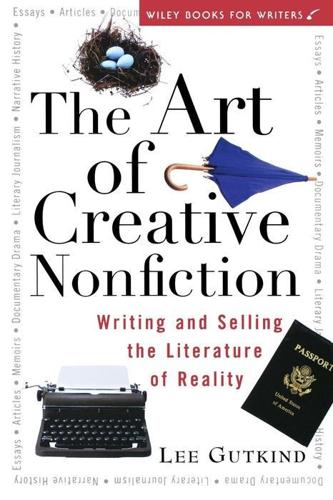
Art of Creative Nonfiction: Writing and Selling the Literature of Reality
by
Lee Gutkind
and
Purba
Published 1 Jan 1997
Box 81536 Pittsburgh, PA 15217 Page 157 Helpful Information Creative Nonfiction Reading List: A Random Recommended Selection of Books and Authors to Sample and Enjoy, from the Editors of the Journal Creative Nonfiction: Anthologies The Art of the Personal Essay, with an introduction by Philip Lopate Best American Essays, edited by Robert Atwan The Creative Nonfiction Reader, edited by Lee Gutkind The John McPhee Reader, with an introduction by William Haworth The Second John McPhee Reader, with an introduction by David Remnick Suggested Books and Authors Desert Solitaire, Edward Abbey Remembering Heaven's Face, John Balaban Loving Rachel, Jane Bernstein Bringing the Heat, Mark Bowden Friendly Fire, C. D. B. Bryan The Corpse Had a Familiar Face, Edna Buchanan In Cold Blood, Truman Capote The White Album, Joan Didion Pilgrim at Tinker Creek, Annie Dillard This House of Sky, Ivan Doig The Broken Cord, Michael Dorris The Studio, John Gregory Dunne The Great Plains, Ian Frasier Page 158 Appendix 4 The Last Shot, Darcy Frey Colored People, Henry Louis Gates The Shadow Man, Mary Gordon Stuck in Time, Lee Gutkind Blue Highways, William Least Heat Moon Dispatches, Michael Herr All Creatures Great and Small, James Herriot Hiroshima, John Hersey Far-Flung Hubbell, Sue Hubbell Liar's Club, Mary Karr House, Tracy Kidder Not Necessarily a Benign Procedure, Perri Klass There Are No Children Here, Alex Kotlowitz Cowboy, Jane Kramer Invasive Procedures, Mark Kramer The Balloon Lady and Other People I Know, Jeanne Marie Laskas Hunting the Whole Way Home, Sidney Lea Arctic Dreams, Barry Lopez Common Ground, J.
…
Jack London is said to have been alcoholic and socially inept, as was Thomas Wolfe, who sometimes wrote nonstop for 36 hours, then drank whiskey and caroused through Greenwich Village until he collapsed in a stupor of exhaustion and relief. Other literary superstars then and now, F. Scott Fitzgerald, Truman Capote, and Raymond Carver included, were similarly unable to balance the isolation required by the writing and the appetite to live life to its fullest, perhaps as a relief from the cloistered writing life. Creative nonfiction writers are permitted to be eccentric, but they must try not to be too egocentric.
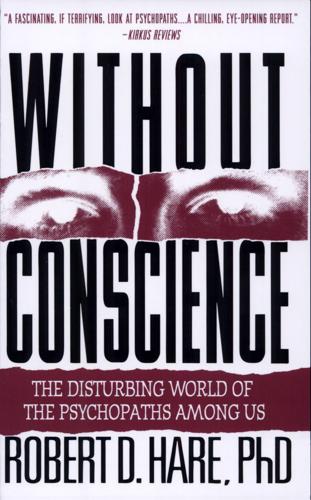
Without Conscience: The Disturbing World of the Psychopaths Among Us
by
Robert D. Hare
Published 1 Nov 1993
Which to his partner seemed a ploy so feeble that it couldn’t possibly fool [anybody]. The clerk, apparently, was not of that opinion, for he produced a blank check, and when Dick had made it out for eighty dollars more than the bill totaled, instantly paid over the difference in cash. —Truman Capote, In Cold Blood In his book Echoes in the Darkness,2 Joseph Wambaugh skillfully describes a psychopathic teacher, William Bradfield, who was able to bamboozle everyone around him with his apparent erudition. Almost everyone, that is. Those familiar with the disciplines in which Bradfield claimed expertise were quickly able to spot his superficial knowledge of the topics.
…
Each tried to plea-bargain by testifying against the other. Sometimes a psychopath and a borderline psychotic join in a bizarre but deadly partnership, with the former using the latter as a killing tool. A well-known example was provided in Truman Capote’s account of Richard Hickock and Perry Smith, executed for murdering four members of the Clutter family in 1959 (In Cold Blood). Hickock had all the markings of a smooth-talking psychopath, whereas Smith was diagnosed as “nearly ... a paranoid schizophrenic.” As reported by Capote, Hickock viewed Smith as a natural killer and reasoned that “such a gift could, under his supervision; be profitably exploited” [p. 69], True to form, Hickock put the blame for the murders on his partner: “It was Perry.

All Your Base Are Belong to Us: How Fifty Years of Video Games Conquered Pop Culture
by
Harold Goldberg
Published 5 Apr 2011
You can go anywhere, and wherever you go, treading down whatever dark alley you choose, you are eventually funneled through the story to its conclusion. And once you hear the words spoken, watch the action that ensues, and then participate in the story, exploring Liberty City, San Andreas, or Vice City becomes more than a game. The rough, tough Bukowski-esque dialog sticks with you just like opening paragraphs of Truman Capote’s In Cold Blood, where shotgun blasts are heard as “somber explosions.” Therefore, you don’t play the game as much as you get to know a world and its people. And you feel as though you are the first to do so. You live it and you dream it. That’s what makes the game’s endings all the more satisfying and breathtaking.
…
These chapters are also based on conversations with others who have worked with Rockstar, and members of the Halo team and the original Doom team. 1 Sam Houser was right to be annoyed about State of Emergency. According to PSXextreme, the game did garner the most buzz and awards at E3, 2001. When it was released, however, it garnered middling reviews and was often returned to stores because of bugs. http://www.psxextreme.com/scripts/reviews2/review.asp?revID=128 2 Truman Capote, In Cold Blood (Random House, 1965), page 5. 3 Senator Lieberman’s quote is from Forbes via Reuters, “Lieberman Denounces ‘Grand Theft Auto’ Video Game,” January 25, 2004. 4 Senator Clinton announced her stance regarding the game on July 13, 2005. The words reverberated throughout the media and on videogame sites like GameSpot. http://www.gamespot.com/news/2005/07/13/news_6129021.html. 5 The Coke commercial is utterly brilliant and worth watching a few times. http://www.youtube.com/watch?

Good Prose: The Art of Nonfiction
by
Tracy Kidder
and
Richard Todd
Published 15 Jan 2013
And Malcolm makes no real attempt to see McGinniss’s side; her excuse, the lamest in the journalist’s arsenal, is that McGinniss wouldn’t talk to her. But whatever one makes of the merits of the lawsuit, Malcolm’s analysis has value—especially for journalists who wish that the matters she deals with had been left submerged. Few journalists would condone lying in their private lives. And yet many nonfiction writers venerate In Cold Blood, for which Truman Capote appears to have lied shamelessly to his subjects. Maybe the moral standing of the person matters. Is it okay to lie to a killer but not to, say, a Rotarian? Most writers feel uncomfortable at best with Capote’s methods, and condemn them even if they celebrate the book. And what about less dramatic cases?
…
Hung over and contrite the next morning, he was comforted by Todd, who said, “At least you didn’t claim the whole world.” Each imagined himself forbearing of the other. Kidder wrote and rewrote many versions of his first Atlantic article, about a mass murder case in California. He had imagined the piece as a sequel to In Cold Blood. At some point Bob Manning sent the manuscript back to Todd, having scrawled on it, “Let’s face it, this fellow can’t write.” Todd kept this comment to himself and merely told Kidder that the piece still needed fixing, and the rewriting continued. A long association had begun. Todd knew only that he had a writer of boundless energy.
…
It is more properly heard as an invitation, almost casual, and, given the complexity that follows, it is marvelously simple. If you try it aloud, you will probably find yourself saying it rather softly, conversationally. Many memorable essays, memoirs, and narratives reach dramatic heights from such calm beginnings. In Cold Blood is remembered for its transfixing and frightening account of two murderers and their victims, and it might have started in any number of dramatic ways. In fact, it starts with a measured descriptive passage: The village of Holcomb stands on the high wheat plains of western Kansas, a lonesome area that other Kansans call “out there.”
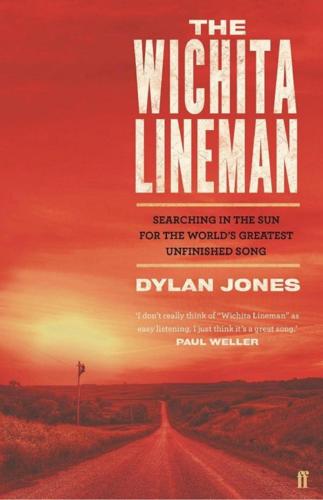
The Wichita Lineman: Searching in the Sun for the World's Greatest Unfinished Song
by
Dylan Jones
Published 29 Jul 2019
‘It was written about the Oklahoma Panhandle, which was really the Cherokee strip [the sixty-mile stretch of land south of the Oklahoma–Kansas border], where the Cherokee lived until we decided we would take that away from them, because that’s what we did. We gave them things and then took them away again. This area is completely flat, and at the western end is New Mexico, the badlands, and to the south is West Texas, and it’s all pretty much desert. [In 1966, Truman Capote’s In Cold Blood was published by Random House, its opening sentence reflecting much about how Kansans, inhabiting one of the most lonesome places in the country, saw themselves.] There’s this little town right at the western end of the Panhandle called Boise City, and they say you can stand in Boise City and see into New Mexico, which is about fifty miles away, so the land really falls off.
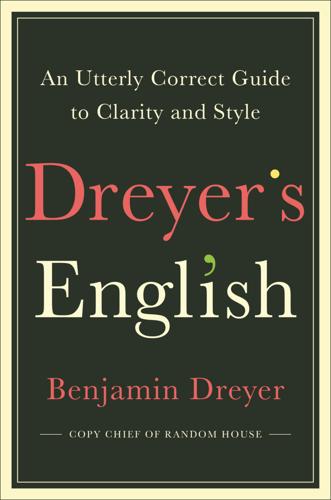
Dreyer's English: An Utterly Correct Guide to Clarity and Style
by
Benjamin Dreyer
Published 15 Jan 2019
Ask a dog. few in number fiction novel Appalling. A novel is a work of fiction. That’s why it’s called a novel. That said, “nonfiction novel” is not the oxymoron it might at first seem. The term refers to the genre pioneered—though not, as is occasionally averred, invented—by Truman Capote with In Cold Blood, that of the work of nonfiction written novelistically. I once—and, happily, to date, only once—encountered the term “prose novel,” which is as brain-clonking a redundancy as “fiction novel” but which I eventually realized was meant as a retronym:*1 In a world full of graphic novels, the user of the term had apparently decided, one must identify a work of fiction containing a hundred thousand words, give or take, but lacking pictures as a “prose novel.”

Nixonland: The Rise of a President and the Fracturing of America
by
Rick Perlstein
Published 1 Jan 2008
State of Arizona meant “a gradual disappearance of confessions as a legitimate tool of law enforcement.” Justice Byron White said it “will return a killer, rapist, or other criminal to the streets to repeat his crime whenever it pleased him.” Even the New York Times found the decision “lacking either constitutional warrant or constructive effect.” Truman Capote, author of the new true-crime thriller In Cold Blood, testified at a Senate hearing, “This is almost like Alice in Wonderland.…While many in our society today are wailing about the rights of the criminal suspect, why do they seem to totally ignore the rights of the victims and potential victims?” Robert Byrd entered an editorial into the Congressional Record on Martin Luther King, “whose organization is studying the Buddhist use of street gangs in Saigon demonstrations, has put the Reverend A.
…
Three days after that, with Kennedy’s killer in custody—his name was Sirhan Sirhan, and he had acted out of some mysterious grievance involving Israel and Palestine—James Earl Ray was apprehended in London. Who were these loners who shot great men, who always seemed to succeed despite their manifest oafishness of character? Truman Capote went on NBC’s Tonight show and said they were patsies brainwashed by plotters determined to bring America to its knees. Time, which used to rush to debunk any JFK conspiracy theory, passed on Capote’s thoughts without criticism, noting that “a cheap crook with Ray’s dismal record of bargain-basement villainy could not have traveled so far without extensive help from experts.”
…
In an ornate reception room: Cannato, Ungovernable City, 124–25. A nightclub in the Bohemian: Chicago’s American, July 23, 1966. In Cleveland, white vigilantes: “Rioting in Cleveland Follows Watts Script,” LAT, July 31, 1966. Miranda v. State of Arizona dissents: Patterson, Grand Expectations, 631. Truman Capote testimony: Chicago Sun-Times, July 22, 1966. “I was distressed a few days ago”: USNWR, August 8, 1966. “The housing program is too small”: “A Time for Candor,” WSJ, July 27, 1966. A Cuyahoga County grand jury: USNWR, August 22, 1966. North Amityville mob: “Police Attacked in Suburban L.I.,” NYT, July 29, 1966.

Appetite for America: Fred Harvey and the Business of Civilizing the Wild West--One Meal at a Time
by
Stephen Fried
Published 23 Mar 2010
Their XY range now spread over four thousand square miles, bounded in the north by the Arkansas River and the Santa Fe railroad near Lakin and Garden City, extending down through the Oklahoma Panhandle and into Texas, where it was bounded in the south by the Canadian River, not far from Amarillo. This made the XY ranch almost as big as the state of Connecticut. (It also meant that Fred Harvey owned what later became the town of Holcomb, the site of the infamous Clutter murders that inspired Truman Capote’s In Cold Blood.) During roundup time, there were often more than two hundred cowboys roaming Fred’s land, looking for XY cattle or others that had strayed from nearby herds. At night there would be huge campouts where cowboys would drink and share stories, some of which may have even been true. They howled over the yarn about young Eli “Romeo” Hall, who turned in two rustlers, “Longtoed Pete” and “Cross-Eyed Swiggett,” for stealing Fred Harvey’s cattle, and then turned down the $1,000 ($22,265) reward because Hall said he would rather just have a job on the Harvey ranch.
…
You can’t rent a car at the Dodge City station (which is true at too many western train stations, unfortunately, and makes train travel more challenging than it ought to be). So we remain in our compartment until the next stop, Garden City, where you can arrange to have a rental car waiting: It’s the same little depot where Truman Capote and Harper Lee disembarked when they visited Holcomb while researching In Cold Blood. We get a car, take the long, flat drive back to Dodge, and realize we made a mistake. Everything in the charming little town is so close to the depot we probably could have done the visit on foot. Dodge City’s main street has been nicely preserved—a little touristy, but it has its charms.

The Empathy Exams: Essays
by
Leslie Jamison
Published 30 Mar 2014
It couldn’t hold his emotions, deepen or soothe them—it can only do these things for us, now, as we watch a movie about his life. Surging chords of Metallica aren’t the sound track of Damien’s story so much as the sound track of our story of his story, which is to say: the story of our hearts breaking for him. The Reason One of the brilliant narrative betrayals of Truman Capote’s In Cold Blood, the grandfather of all highbrow true crime, is that the criminals at its center, the men who killed an entire family, ultimately emerge with no motive besides money. This feels like a second death: it makes the deaths feel meaningless by taking away the possibility of any affective frame that could explain them.
…
Works Consulted Books Agee, James, and Walker Evans. Let Us Now Praise Famous Men. Baxter, Charles. Burning Down the House: Essays on Fiction. Bidart, Frank. “Ellen West,” in The Book of the Body. Brooks, Peter. Troubling Confessions: Speaking Guilt in Law and Literature. Capote, Truman. In Cold Blood. Carson, Anne. “The Glass Essay” and “Teresa of God,” in Glass, Irony and God. D’Ambrosio, Charles. Orphans. De Beauvoir, Simone. The Second Sex. Dickens, Charles. David Copperfield. ——. Great Expectations. Didion, Joan. Salvador. ——. Slouching Towards Bethlehem. ——. The White Album. Dubus, Andre.
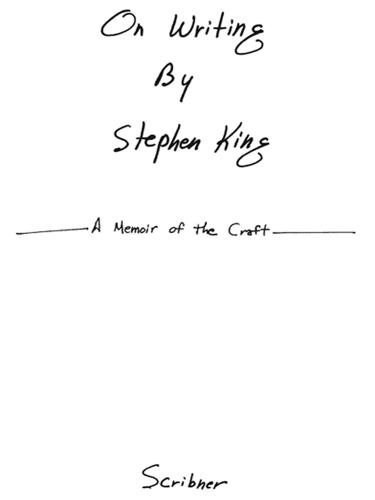
On Writing: A Memoir of the Craft
by
Stephen King
Published 1 Jan 2000
And I believe the converse is also true: that my writing and the pleasure I take in it has contributed to the stability of my health and my home life. You can read anywhere, almost, but when it comes to writing, library carrels, park benches, and rented flats should be courts of last resort—Truman Capote said he did his best work in motel rooms, but he is an exception; most of us do our best in a place of our own. Until you get one, you’ll find your new resolution to write a lot hard to take seriously. Your writing room doesn’t have to sport a Playboy Philosophy decor, and you don’t need an Early American rolltop desk in which to house your writing implements.
…
The tale’s narrative cutting edge starts to rust and I begin to lose my hold on the story’s plot and pace. Worst of all, the excitement of spinning something new begins to fade. The work starts to feel like work, and for most writers that is the smooch of death. Writing is at its best—always, always, always—when it is a kind of inspired play for the writer. I can write in cold blood if I have to, but I like it best when it’s fresh and almost too hot to handle. I used to tell interviewers that I wrote every day except for Christmas, the Fourth of July, and my birthday. That was a lie. I told them that because if you agree to an interview you have to say something, and it plays better if it’s something at least half-clever.

On Writing Well (30th Anniversary Edition)
by
William Zinsser
Published 1 Jan 1976
Ninety percent of the magazine was now allotted to nonfiction articles, with just one short story by a three-named author to keep the faithful from feeling abandoned. It was the beginning of a golden era of nonfiction, especially in Life, which ran finely crafted articles every week; in The New Yorker, which elevated the form by originating such landmarks of modern American writing as Rachel Carson’s Silent Spring and Truman Capote’s In Cold Blood; and in Harper’s, which commissioned such remarkable pieces as Norman Mailer’s Armies of the Night. Nonfiction became the new American literature. Today there’s no area of life—present or past—that isn’t being made accessible to ordinary readers by men and women writing with high seriousness and grace.
…
Bette Davis, stretching the bounds of type, went in for costume (The Virgin Queen) and period (The Old Maid), but she was always Bette Davis, and no one would have thought to want it otherwise. Like Streep, she even dared to play unlikable, morally ambiguous heroines, her greatest being the wife of the plantation owner in The Letter who murders her treacherous lover in cold blood, then refuses to repent. The difference is that Davis fused with the role, poured her own passion and intensity into it. Her heroine is as icily proud and implacable as Medea—which may be why members of the Academy denied her the Oscar she deserved in favor of sweeter and tamer Ginger Rogers for Kitty Foyle—but Davis makes us respond to the fire within.
…
Edgar, 224–25 Houseman, John, 135 “How Iraq Reverse-Engineered the Bomb” (Zorpette), 160–64 “How the Savings and Loans Were Saved” (Keillor), 222–23 How-to writing, 83, 148–49 How to Survive in Your Native Land, (Herndon), 29–30 “Hub Fans Bid Kid Adieu” (Updike), 182–83 Humanity in business writing, 166–67, 172 in science writing, 152 Humor, 207–27, 242–43 Hyman, Dick, 246 Hyperbole, 77 I.E.E.E. Spectrum, 160–64 Imagery, fresh, 179, 235, 267 Imitation, learning by, 218, 235–36 Immense Journey, The (Eiseley), 157 In Cold Blood (Capote), 98 Individuality, 132–34. See also Personality. Integrity, 108, 186, 260 Intention, 259–60 Interviews, 100–115 ethics with, 108, 111–15 with experts, 248–51 preparation for, 103–5 tape recorder for, 105–6 use of quotations, 108–9 Investigative reporting, 160, 259 Irony, 85–86, 208 Jackson, Jesse, 237 Jargon business, 173–75 education, 168–72 journalism, 32–34 sports, 178–79 vs. usage, 43–44 Johnson, Lewis P., 142–43 Johnson, Lyndon, 212 Johnson, Samuel, 41 Johnson, Walter, 58 Journalese, 32–34 Journalism first-person voice in, 21 investigative, 160, 259 jargon in, 32–34 literature and, 95–99 New, 114 paragraphing in, 79–80 Kamzic, Nick, 90 Kaplan, Janice, 189–90 Karr, Mary, 135, 287 Kaufman, George S., 194 Kazin, Alfred, 137–39 Keillor, Garrison, 207, 220, 221–23 Kelly, Walt, 212 Kennedy, John F., 237 Keyes, Robert W., 158–59 King, Billie Jean, 190 King Leopold’s Ghost (Hochschild), 98 King James Bible, 68, 239, 297 Kingston, Maxine Hong, 141–42 Kluger, Richard, 98 Kubrick, Stanley, 208 Lampoon, 208 Law & Order, 197 Lardner, Ring, 99, 207, 216, 218 Last Brother, The (McGinniss), 111 Latin words, 67 Lawrence, T.

Antonio-s-Gun-and-Delfino-s-Dream-True-Tales-of-Mexican-Migration
by
Unknown
Garden City has always been a regional shopping center and is today the home to the only Target and Home Depot stores for miles. Downtown Garden City is usually empty, and people are rarely seen out walking. Nor is there much to do at night, which people say is one reason the region has among Kansas’s highest teen pregnancy rates. Seven miles away is the town of Holcomb, famous as the setting of In Cold Blood, Truman Capote’s chronicle of the murder of a farm family. This part of Kansas has always scared people away. The census showed that the state had . million people. Of these, only about , souls were brave enough to live west of Wichita. The first European to see the region was a Spanish explorer named Francisco Vásquez de Coronado, in .

Screenplay: The Foundations of Screenwriting
by
Syd Field
Published 17 Dec 2007
Schrader went on to write Obsession, and Colin Higgins, who wrote Harold and Maude, went on to write a train story, Silver Streak. Richard Brooks spent eight months researching Bite the Bullet before he put one word on paper. He did the same thing with The Professionals and In Cold Blood, even though he based the latter on Truman Capote’s exhaustively researched book. Waldo Salt, who wrote Midnight Cowboy, researched Coming Home by speaking to and recording some twenty-six paralyzed Vietnam veterans, which resulted in two hundred hours of taped interviews. Waldo Salt believed in capturing “the truth” of the characters in a story.
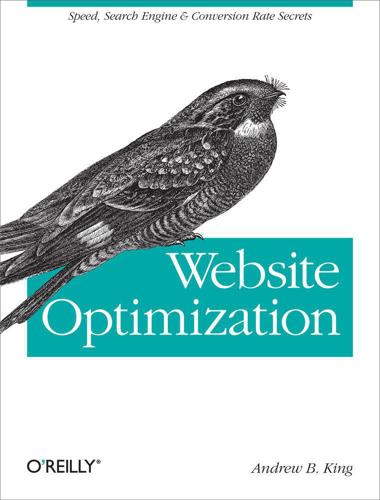
Website Optimization
by
Andrew B. King
Published 15 Mar 2008
One client provided this example with the search word clutter. After looking into pages where clutter was a frequently sought-after term, we noticed traffic coming in from their paid campaigns using that word in the context of results for "Clutter Family Murders." The murders of the Clutter family were described in the book In Cold Blood by Truman Capote (Random House). This was not exactly what they were looking for in traffic. Therefore, with the high bounce rate, we decided to flag family and murder as negative keywords, thus reducing the likelihood of getting inadvertent traffic. Using these negative keywords reduced our client's bounce rate on those pages, as well as their costs on those campaigns.

If Mayors Ruled the World: Dysfunctional Nations, Rising Cities
by
Benjamin R. Barber
Published 5 Nov 2013
little more than a cover-up for the stark police-blotter truths of Wisconsin Death Trip, Michael Lesy’s lurid evocation of small-town crime in rural America a hundred years ago.23 At sunrise, Oklahomans may croon “Oh, what a beautiful morning!” but by nightfall they face darker thoughts of the kind Norman Mailer explored in his Executioner’s Song. The Kansas imagined by such cynics is not the dreamy Oz of Dorothy’s Over the Rainbow, but the hardscrabble land of Truman Capote’s In Cold Blood and its dead-souled killers, or nowadays perhaps the wrecked towns strewn along Oklahoma’s real life tornado alley, where funnel clouds produce only wastelands, not emerald cities. Even celebrants of country culture such as the English poet George Crabbe understood that the rural village was not unblemished: in this classic 1783 work, The Village, we find this couplet: “No longer truth, though shown in verse, disdain / But own the Village Life a life of pain.”24 Carlo Levi brings more balance to country life than Mailer or Capote or Lesy, but his portrait of a forgotten rural village in the south of Italy in his Christ Stopped at Eboli is almost more devastating, perhaps because it is unexpectedly sympathetic.
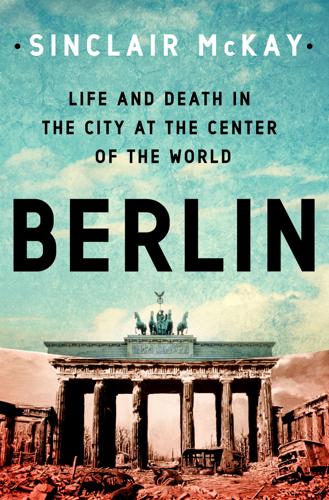
Berlin: Life and Death in the City at the Center of the World
by
Sinclair McKay
Published 22 Aug 2022
His antennae also guided him swiftly to West Berlin’s ballet and opera companies, where he soon made valued friends and began writing as a ballet critic for art magazines (one of which, Monat, was funded by the Americans). Art made free movement between zones possible; he got ‘review tickets everywhere, even in East Berlin, where I saw premieres by Brecht’.18 Throughout the early 1950s, West Berlin received visits from the New York City Ballet as well as writers and poets such as W. H. Auden and Truman Capote. But there was a sense of rivalry too; the East Berlin authorities were able to call upon the greatest of the Russian ballet companies as well as dancers and musicians from throughout central and eastern Europe. The desire for rich culture was intense. As Koegler observed, it was now ‘possible to get in touch again with what had happened outside during the years of our isolation’.19 He would later become friends with Lotte Lenya, who had launched her extraordinary career in the Weimar period with Die Dreigroschenoper, the music written by her former husband Kurt Weill, and who returned to West Berlin in 1955 to record new versions of Weill songs.
…
He was invited to take a seat. As he did so, an SS man positioned behind him raised his gun. Von Bose was shot in the back ten times. Von Papen’s lawyer, Edgar Julius Jung – who yearned for the government of Germany to revert to a more traditional Wilhelmine autocracy – was led away. Later that day, he too was shot in cold blood. The floors of the Borsig Palace were stained red; when working on an immediate rebuild of the site, Hitler’s architect Albert Speer found himself staring briefly at the bloodied marble, and then looking away quickly, troubling himself no more with the spectacle.20 In the midst of this sudden horror, von Papen himself was placed under house arrest in his Berlin villa, with the telephone cut off.
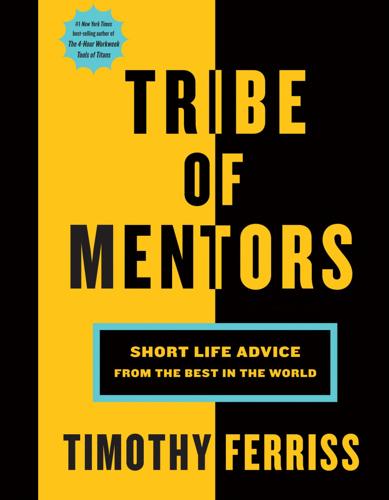
Tribe of Mentors: Short Life Advice From the Best in the World
by
Timothy Ferriss
Published 14 Jun 2017
The Beginning of Infinity by David Deutsch greatly expanded my sense of the potential power of human knowledge, while Nick Bostrom’s Superintelligence made me worry that machine knowledge could ruin everything. I strongly recommend both books. But if you just want to forget about the future and lose yourself in the book that forever changed how narrative nonfiction is written, read In Cold Blood by Truman Capote. What purchase of $100 or less has most positively impacted your life in the last six months (or in recent memory)? I found a great sleeve for my computer made by WaterField Designs (MacBook SleeveCase, $69). It is so well made that I carry my computer with me much more than I used to, and this has led to some very satisfying sessions of work in public places.
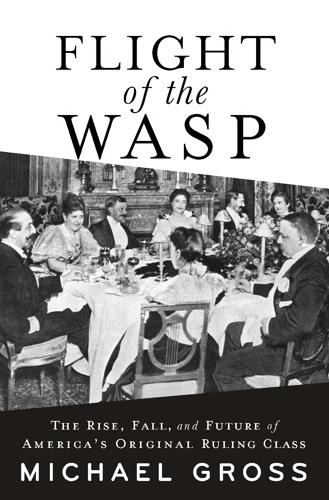
Flight of the WASP
by
Michael Gross
“We were together,” Marietta told her diary succinctly.64 She remained at the United Nations after Stevenson’s replacement dismissed her, moving to secretary general U Thant’s staff as a United Nations School fundraiser—which was not her strong suit. Neither was motherhood, though in 1966, she brought Penelope home, enrolling her in the UN school. Just after Thanksgiving, they both attended Truman Capote’s Black and White Ball at the Plaza Hotel, where Penelope was discovered and turned into a fashion model. Just seventeen, she was spotted by the photographer Richard Avedon, who called Vogue’s then-editor, Diana Vreeland, “the next morning, and then she rang me and I went to lunch with her,” said Tree, who was booked for a job with Avedon about a week later.
…
In the meantime, they succeeded in extending emergency immigration quotas that favored Nordics; then the Immigration Restriction Act of 1924 severely curtailed the human flow to America, except, of course, from northern Europe. That effort won Mary Harriman a medal and Fairfield Osborn’s endorsement for supporting “the selection of the best, the exclusion of the worst.”82 “In cold-blooded, scientific language, our best stock is threatened with extinction,” Osborn warned in a 1923 speech to a conference of corporate executives, advocating a policy banning from America unassimilable Asians and Blacks, while allowing “desirable types” from “healthy, sound families” in Italy and the Balkans.83 With the immigration pipeline plugged, the public lost interest in the eugenics advocates’ cause.

And Here's the Kicker: Conversations with 21 Top Humor Writers on Their Craft
by
Mike Sacks
Published 8 Jul 2009
I work on deadline, and I have to do this whether I'm in the mood to work or not. But why I'm in the mood sometimes and not at other times is still a mystery. Do you have tricks you've taught yourself that have made the process less difficult? Getting away from work and coming back to it fresh really helps. Also, Truman Capote once said that if you have to leave a manuscript or a chapter, don't finish up the last little bit, because then, when you come back, you'll have to re-start from nothing. I've often used this approach. If I'm going downstairs for lunch, I leave something I'm excited to come back to — so I won't be starting from zero miles per hour.
…
So your father took in Charles Starkweather like a stray puppy? I guess in a way he did — if a puppy can slit throats. My father had always said that Charles was a pitiful person, misled and kind of lost. You once pointed out that the Midwest has produced its fair share of serial killers; not just Charles Starkweather, but also the In Cold Blood murderers, Dick Hickock and Perry Smith. Have you ever figured out the connection? I don't know what it is. I really have no idea. But, you know, the Midwest has also produced its share of talk-show hosts. Johnny Carson grew up in Norfolk, Nebraska, which is not too far from where I grew up. As a kid in the forties, I saw Carson perform as “The Great Carsoni” — that's what his magic act was called — in a church basement in Lincoln, Nebraska.
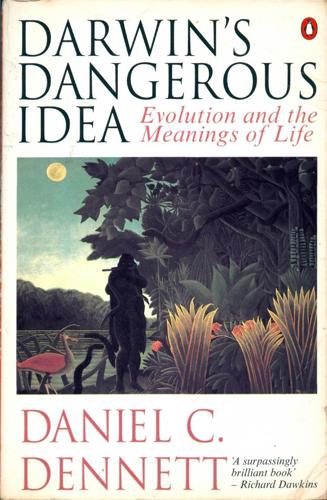
Darwin's Dangerous Idea: Evolution and the Meanings of Life
by
Daniel C. Dennett
Published 15 Jan 1995
Today bookstores face the same sort of ill-formed problem: how should the following categories be cross-organized: bestsellers, science fiction, horror, garden, biography, novels, collections, sports, illustrated books? If horror is a genus of fiction, then true tales of horror present a problem. Must all novels be fiction? Then the bookseller cannot honor Truman Capote's own description of In Cold Blood (1965) as a nonfiction novel, but the book doesn't sit comfortably amid either the biographies or the history books. In what section of the bookstore should the book you are reading be shelved? Obviously there is no one Right Way to categorize books — nominal essences are all we will ever find in this domain.
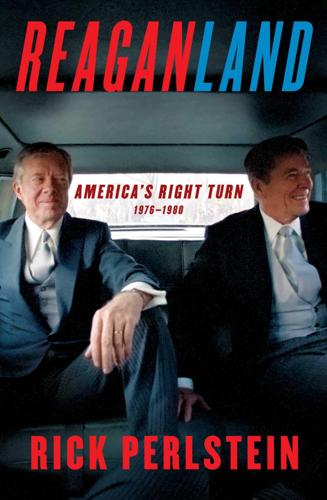
Reaganland: America's Right Turn 1976-1980
by
Rick Perlstein
Published 17 Aug 2020
“They’re not contagious,” he said. This was a Reagan pattern: often strikingly unempathetic when it came to the effects of policy on millions of people, he could be achingly so in defense of individuals, especially those he could identify with or knew personally. Though he also joked that since Truman Capote was about to visit the Capitol, they could “tie a rope about him and troll him down the hall to see what they could catch.” Getting a meeting with Reagan turned out to be easy: Mixner met a gay former Reagan official at the man’s home—when his wife was out of town. Intrigued, this man approached another, more senior former advisor, who was even more fearfully discreet: they met at an outlying Denny’s restaurant, where he begged repeatedly for anonymity, and insisted he review any agreement they arrived at with Reagan.
…
“they should be barred” Mark Green, Ronald Reagan’s Reign of Error (New York: Pantheon, 1987), 119. Reverend Troy Perry Reagan to Reverend Gay, n.d., in RALIL, 233. “an athlete and all man” Reagan to Lorraine and Elwood Wagner, June 5, 1979, dictation file, RRPL, Box 1; reprinted in ibid., 66–67. colleague named Phillip Battaglia Cannon, Governor Reagan, 238–53. Truman Capote Shirley, Rendezvous with Destiny, 35. the denomination Reagan Christianity Today, December 5, 1977. excerpted them in Bancroft Library, University of California–Berkeley, Protest Collection, Briggs folio. William F. Buckley joined William F. Buckley column, September 19, 1978. Gerald Ford called it Shilts, The Mayor of Castro Street, 243.
…
Curiously, though he was supposed to be seeking a conviction for first-degree murder—murder that was willful and premeditated with malice aforethought—he said nothing about what White’s forethoughts might have been. The defense’s opening was far more evocative. White’s lawyer Douglas Schmidt admitted the obvious up front—that White had shot and killed Supervisor Milk and Mayor Moscone. But “good people, fine people, with fine backgrounds, simply don’t kill people in cold blood. It just doesn’t happen, and obviously some part of them has not been presented so far.” He depicted White as an exemplary citizen—star athlete, Vietnam veteran, father, police officer, and a fireman “decorated for having saved a woman and her child in a very dangerous fire”—who had tragically fallen prey to an undiagnosed manic depression, which caused “radical changes to the diet, compulsive difficulty in sleeping, low energy, withdrawal from duties, withdrawal from job, and withdrawal from others, and sometimes bizarre behavior.”

The Snowball: Warren Buffett and the Business of Life
by
Alice Schroeder
Published 1 Sep 2008
Warren now spent much of his time elephant-bumping at black-tie events in New York and Washington with Graham, or staying at her house for her Kay Parties. Despite his residual awkwardness and cackling laugh, he was meeting a circle of powerful, celebrated friends and acquaintances of Kay’s that opened his eyes to a new world. “I met Truman Capote,” he says about the author of Breakfast at Tiffany’s and In Cold Blood, who had thrown the legendary Black and White Ball in Graham’s honor at the Plaza Hotel in New York; the event became known as the “party of the century.” Capote had been a confidant of many rich international society women. “He would come down to her place and sit there, this little guy all kind of hunched down on the sofa, talking in this voice you couldn’t believe.